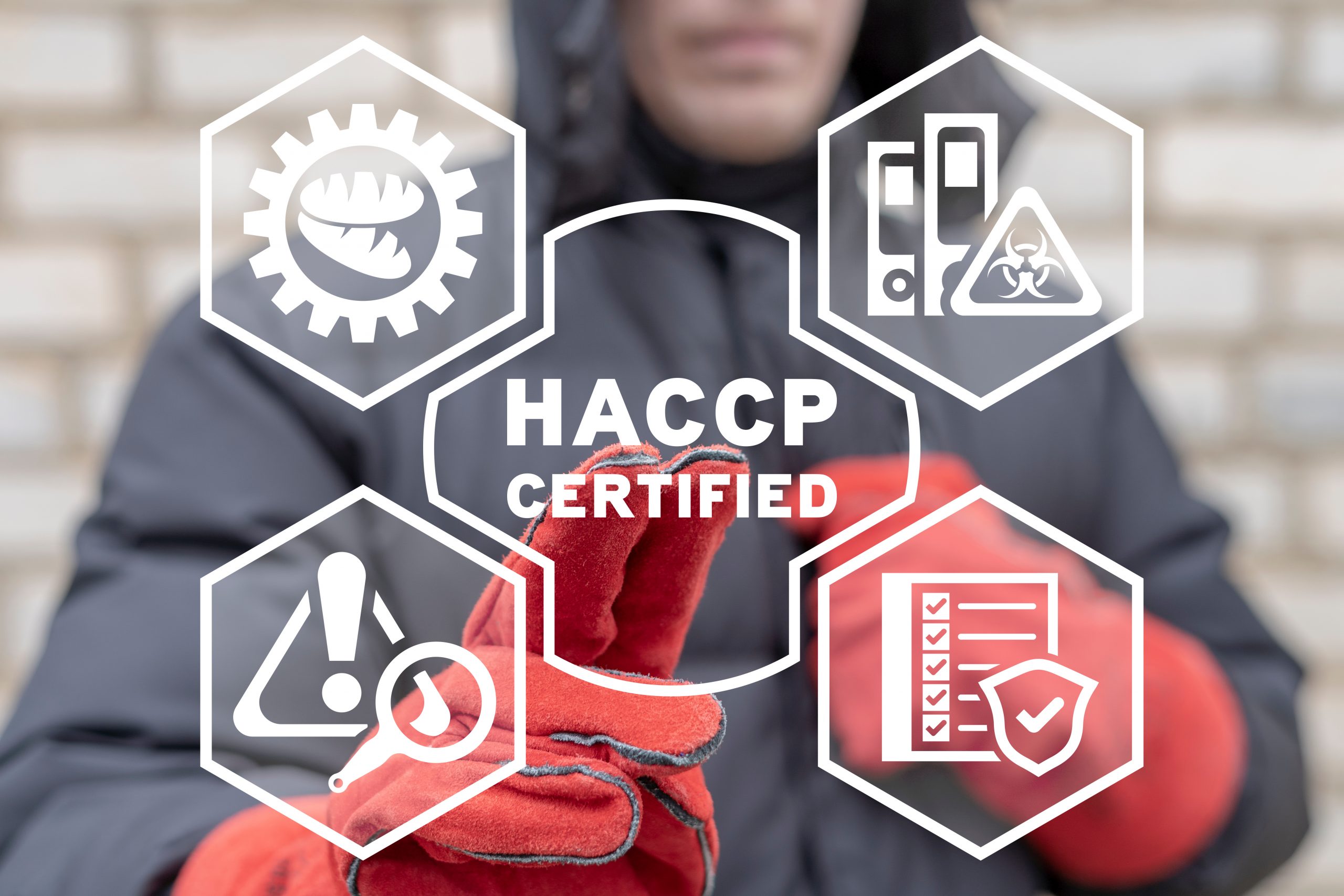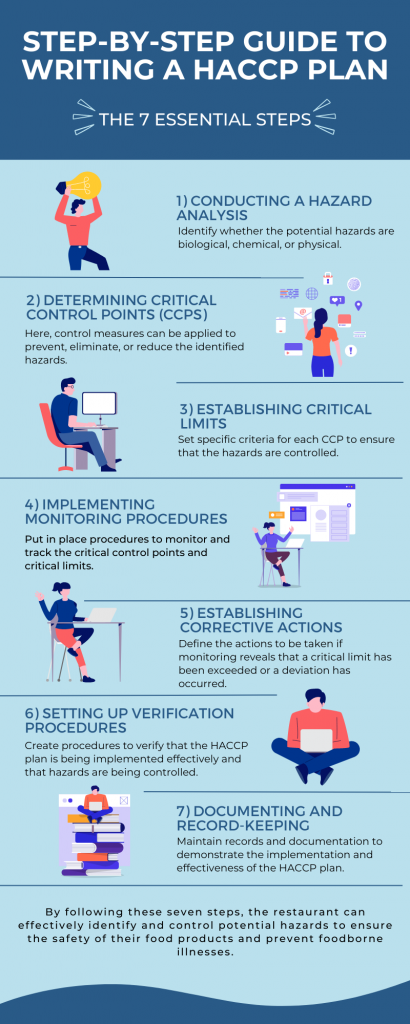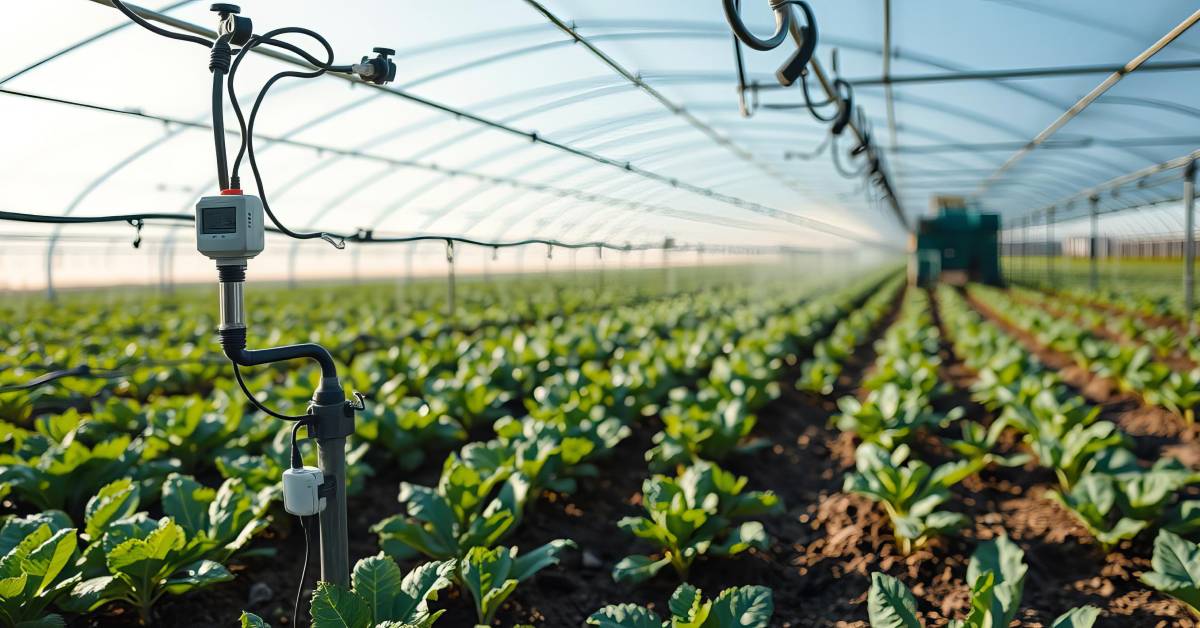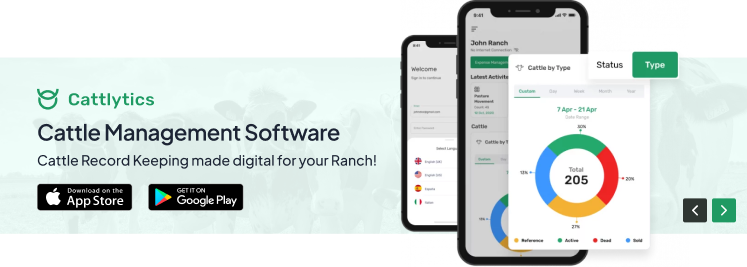Ensuring food safety standards is essential to protecting consumers against foodborne diseases. Current WHO statistics indicate that contaminated food annually claims the lives of 420,000 people across the globe, affecting 600 million individuals. Nearly one in every six Americans contracts a foodborne disease each year. These statistics are not only a threat to public health but also lead to economic challenges.
Therefore, food businesses are responsible for safeguarding consumers’ health and reducing potential hazards. Writing a HACCP (Hazard Analysis Critical Control Point) plan is one of the measures companies take to achieve this objective.
In this blog, we will discuss the importance of the HACCP plan and the steps of writing it in detail.
What is HACCP?
HACCP (Hazard Analysis Critical Control Point) is a food safety management system with international recognition. It systematically addresses and manages biological, chemical, and physical hazards throughout food production, from raw material procurement to distribution and consumption.
HACCP, which Pillsbury initiated for the space program in the 1950s, has since gained widespread acceptance in the food industry. By incorporating scientific principles, it identifies and regulates potential hazards before they occur to prevent foodborne illnesses, and easily accessible free templates can assist businesses in efficiently creating and implementing their own HACCP plans. HACCP, endorsed by certification programs and regulatory bodies, including GFSI, FDA, and Codex Alimentarius, is an integral framework for guaranteeing food safety and adherence to regulations throughout the global food supply chain.
Food processing facilities, restaurants, caterers, and retail establishments are typical examples of organizations required to implement HACCP plans to ensure food safety.
7 Steps of Writing a HACCP Plan
Specific guidelines are set that food businesses must adhere to to comply with the HACCP plan regulations and its requirements.
The Hazard Analysis Critical Control Point (HACCP) consists of seven basic principles mentioned in detail below:
1. Conduct a Hazard Analysis:
The first principle of writing a HACCP plan involves conducting a thorough hazard analysis. From acquiring raw ingredients to consuming the finished product, the HACCP team closely examines every stage of the food manufacturing process to identify potential hazards, such as biological, chemical, or physical agents, that could cause disease or damage without appropriate control measures. Dangers that are not likely to occur are excluded from the analysis.
The result serves as a guide for creating control measures, focusing on preventing, eliminating, or controlling hazards throughout food production. A thorough hazard analysis is essential because it establishes the foundation for a successful HACCP plan.
2. Determine Critical Control Points:
The second principle of writing a HACCP plan focuses on identifying and implementing necessary preventive measures to eliminate or reduce hazards to acceptable levels. This principle emphasizes the critical control points (CCPs) within the food handling processes. CCPs are steps or procedures where control can be applied to prevent, eliminate, or reduce food safety hazards.
Information gathered during the hazard analysis in Principle 1 is integral to identifying CCPs. The HACCP team may utilize a CCP decision tree to aid in this identification process. CCPs may address multiple food safety hazards, and their number is determined by the processing steps and required control level.
Examples of CCPs include monitoring pasteurization temperatures, ensuring timely food cooling to prevent bacterial growth, and addressing allergen contamination risks at specific stages. Developing and documenting CCPs are critical tasks solely intended for ensuring product safety. Failing to maintain control at a CCP would result in an unacceptably high level of risk unless appropriate measures, such as the HACCP plan, are promptly applied to eliminate or minimize the hazard.
3. Establish Critical Limits:
Principle 3 of writing a HACCP Plan focuses on establishing critical limits. Critical limits refer to the maximum or minimum values assigned to a control measure at a Critical Control Point (CCP) to effectively mitigate, eliminate, or minimize hazards to an acceptable level.
Specific criteria must be set to define these critical limits to determine how a product transitions from being safe to potentially unsafe. These criteria encompass various aspects, such as physical, chemical, and procedural factors, including but not limited to:
- pH values
- Salt content
- Sugar content
- Temperatures
4. Implement Monitoring Procedures:
Following the HACCP plan requirements, principle 4 emphasizes the necessity for a food safety system to establish a method for assessing the control status of CCPs (Critical Control Points) and critical limits. To achieve this objective, consistent and ongoing monitoring is essential.
CCPs must be continuously monitored to quickly identify any possible loss of control, spot deviations from accepted standards, and ensure that corrective measures are implemented when needed. The food safety system can efficiently maintain control over critical points and reduce risks related to food safety hazards by following these monitoring procedures.
5. Establish Corrective Actions:
Principle 5 of writing a HACCP plan focuses on establishing corrective actions, which refer to any necessary steps to be taken when monitoring a Critical Control Point (CCP), indicating a breach of a critical limit.
The objective of implementing corrective actions is threefold:
- Ensure the product’s safety
- Prevent the recurrence of the issue
- Maintain a well-documented chain of records for audit purposes
A typical HACCP plan template consists of three corrective actions that must be practiced:
- Immediate action involves taking swift measures to regain control over the process.
- Short-term action: The focus is on identifying and managing the affected product by adequately controlling it.
- Long-term action: This level of action entails investigating the root cause of the problem and implementing preventive measures to prevent its recurrence.
6. Establish Verification Procedures:
Principle 6 of the HACCP plan focuses on creating verification procedures to ensure the effectiveness of the food safety management system. Regular reviews of the HACCP system are conducted to confirm its efficiency. These reviews encompass internal audits, as well as validation and verification procedures.
Validation involves gathering evidence to demonstrate the effectiveness of the HACCP plan, particularly at critical control points and critical limits. It proves that the HACCP system can effectively control the hazards that have been identified.
Verification and internal auditing assess the overall HACCP system rather than individual activities. Verification is to confirm that every part of the HACCP system operates as intended, follows the HACCP plan, and is as updated as possible.
7. Establish Documentation:
Accurate record-keeping throughout all stages of the food safety system is a crucial aspect of Principle 7 in the HACCP Plan steps. This documentation plays a vital role in verifying the effectiveness of the implemented controls.
Various types of documentation contribute to the support of a HACCP plan, including:
- Hazard analysis details
- Determination of Critical Control Points (CCPs)
- Training records
- Procedures encompassing corrective actions, glass breakage, and standard operating procedures
- Cleaning schedules
- Reports on pest control
- Supplier documentation, such as lists, specifications, and audit records
- Records of CCP monitoring, including deviations and corrective actions, modifications to the HACCP plan, visual inspection reports, and daily checks like temperature monitoring
Maintaining accurate documentation is crucial for effectively implementing the HACCP plan in the food industry and as part of a due diligence defense if required. Thus, it is essential to consistently update and uphold information, documentation, and available resources.
HACCP Plan Examples
We’ll now discuss its practical examples as we’ve covered the significant steps of writing a HACCP plan.
Here is an example of the HACCP plan for a restaurant to help you understand the application of the steps:
Step 1: Conduct a Hazard Analysis
Identify the potential hazards associated with the restaurant’s food operations, for example:
Biological hazard: Cross-contamination of raw and cooked food leads to foodborne illnesses.
Chemical hazard: Food contamination with cleaning agents or additives beyond permissible limits.
Physical hazard: Presence of foreign objects in food due to improper handling or storage.
Step 2: Identify Critical Control Points (CCPs)
Determine the critical control points in the restaurant’s food handling processes where control measures can be applied to prevent, eliminate, or reduce the identified hazards. Examples of CCPs could be:
- Receiving raw ingredients
- Storage of perishable food
- Cooking or heat treatment
- Cooling and storage of cooked food
- Cross-contamination prevention during food preparation
- Cleaning and sanitation procedures.
Step 3: Establish Critical Limits
Set specific criteria for each CCP to ensure that the hazards are controlled. For instance:
- Check for proper temperature, packaging integrity, and expiry dates of raw materials.
- Ensure internal temperature reaches the required safe level for cooked items (e.g., 165°F/74 °C for poultry).
- Verify that surfaces are cleaned and sanitized using approved methods and chemicals.
Step 4: Implement Monitoring Procedures
Establish procedures to monitor and track the critical control points and limits. For example:
- Use temperature loggers to record and verify temperatures upon arrival of raw materials.
- Regularly use calibrated thermometers to check the internal temperature of cooked food.
- Conduct visual inspections and ATP testing to ensure proper cleanliness.
Step 5: Establish Corrective Actions
Define the actions to be taken if monitoring reveals that a critical limit has been exceeded or a deviation has occurred. For instance:
- Reject or return any ingredients that are not within the specified temperature range or have signs of spoilage.
- Cook the food longer or at a higher temperature to achieve the required safety level.
- Investigate the cause of inadequate cleanliness, retrain staff if necessary, and re-clean the affected areas.
Step 6: Set up Verification Procedures
Create procedures to verify that the HACCP plan is implemented effectively and that hazards are controlled.
Examples include:
- Regular audits of the HACCP plan by internal or external food safety experts.
- Sampling and testing of food products to ensure compliance with safety standards.
- Periodic review and update of the HACCP plan based on new hazards or process changes.
Step 7: Establish Record-Keeping and Documentation
Maintain records and documentation to demonstrate the implementation and effectiveness of the HACCP plan. It may include:
- Temperature logs for receiving and storage areas.
- Cooking and cooling temperature records.
- Cleaning and sanitation logs.
- Corrective action reports.
- Verification and audit reports.
By following these seven steps, the restaurant can effectively identify and control potential hazards, ensuring the safety of its food products and preventing foodborne illnesses.
Common Challenges and Tips
Food businesses can face the following challenges in implementing a HACCP plan:
- Lack of knowledge or training among staff
- Inadequate assistance or resources
- Management’s failure to commit or communicate
- The HACCP plan needs to be flexible and adaptable
To address these challenges and ensure the successful implementation of HACCP, it is crucial to prioritize competence and involvement among staff. It can be achieved by providing them with adequate training and guidance on HACCP principles and procedures. Additionally, allocating and prioritizing resources appropriately is essential. If needed, seeking external support or assistance can also be beneficial.
Clearly defining roles and duties within the organization and communicating expectations and goals efficiently can increase employee interest and motivation. Recognizing and rewarding good performance and compliance can foster a positive HACCP culture within the business.
Evaluating and updating the HACCP plan regularly is essential to ensure it remains appropriate for all products, procedures, and circumstances. This entails implementing necessary alterations or modifications to handle new hazards or raise the plan’s efficacy. By staying proactive and adaptable, businesses can maintain a robust HACCP system that protects food safety and complies with regulations.
Importance of Regular Training and Documentation
Consistent staff training and thorough documentation are two major principles of the HACCP plan. Regular staff training ensures they have the knowledge and abilities to successfully apply HACCP controls. Similarly, detailed documentation of the HACCP system is critical to ensuring its successful implementation and compliance with food safety requirements.
Documentation also allows organizations to keep detailed and accurate records to monitor and evaluate HACCP controls effectively. These records serve as evidence of compliance with food safety requirements and provide a reliable means of tracking the implementation and maintenance of the HACCP system.
Digitizing HACCP Documentation and Planning for Food Safety:
The shift towards digital solutions is pivotal in maintaining food safety through HACCP. Exploring the significance of digitizing HACCP documentation using digital tools like Ecodocs becomes imperative for streamlining and fortifying food safety practices.
Streamlined Documentation Management:
Embracing digital platforms for HACCP documentation ensures a more streamlined and efficient process. By digitizing documents, organizations can create, store, and organize plans, procedures, and records in a centralized manner.
Simplified HACCP Plan Creation:
Adopting digital solutions simplifies the creation of HACCP plans. Organizations can use templates and guidance to systematically identify hazards and critical control points and implement control measures, fostering a more structured and understandable approach to food safety planning.
Enhanced Workflow and Task Management:
Digital tools enable efficient collaboration in managing HACCP processes. Tasks can be assigned, deadlines set, and progress tracked seamlessly, ensuring that monitoring, verification, and corrective actions are carried out in a timely and organized manner.
Proactive Compliance Monitoring and Auditing:
Digitizing the process of writing a HACCP plan makes it possible to monitor compliance proactively. By planning inspections, carrying out internal audits, and quickly addressing non-conformities, organizations can help preserve food safety standards by being more watchful and responsive.
The importance of digitizing HACCP documentation cannot be overestimated. In addition to streamlining and upgrading procedures, it ensures that businesses are better prepared to tackle all aspects of food safety with utmost accuracy.
Conclusion
All in all, food safety is a top priority when you’re in a food business. To ensure it, the HACCP plan is your go-to solution. This article and its steps taught you how to write a HACCP plan, its requirements, and how digitizing it using an advanced software solution like EcoDocs can help simplify your business operations.
FAQs
What is the First Step in Developing a HACCP Plan?
The first principle of developing a HACCP plan involves conducting a thorough hazard analysis and identifying potential hazards at each stage of the food production process.
Which Practice Requires a Variance Based on an HACCP Plan for Regulatory Compliance?
Specialized food processing methods, such as smoking, curing meat, and reduced-oxygen packaging, require a variance-based HACCP plan.
What is the Purpose of the Hazard Analysis Step of Implementing a HACCP Plan?
The purpose of the hazard analysis step is to list all potential hazards, such as biological, chemical, or physical agents, that could cause disease or damage if appropriate control measures are not taken.
What is a HACCP Plan Template?
The HACCP plan template is a document that lists all the processes and procedures that food businesses must follow to comply with food safety regulations.








